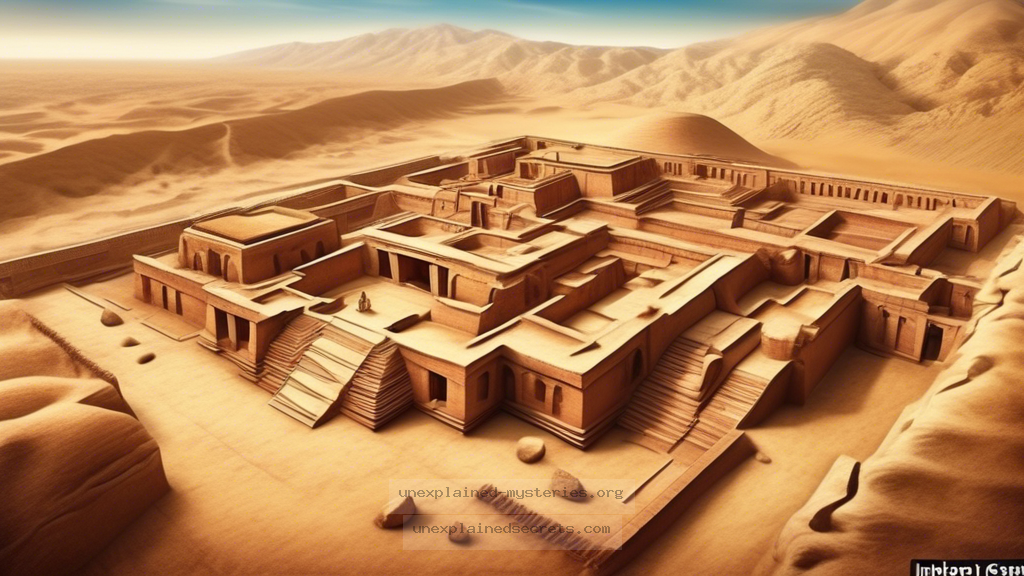What Secrets Lie Behind the Disappearance of the Indus Valley Civilization?
What Secrets Lie Behind the Disappearance of the Indus Valley Civilization?
The Indus Valley Civilization (IVC), one of the world’s earliest urban cultures, flourished around 2500 BCE in what is now Pakistan and northwest India. Despite its impressive achievements in urban planning, architecture, and trade, this advanced society mysteriously declined around 1900 BCE. What caused the downfall of this remarkable civilization remains a captivating question for historians, archaeologists, and enthusiasts of ancient mysteries alike. Understanding this enigma not only sheds light on the IVC itself but also provides insights into the resilience and vulnerabilities of human societies.
Historical Context of the Indus Valley Civilization
The Indus Valley Civilization was one of the three early cradles of civilization, alongside Mesopotamia and Ancient Egypt. Covering an area of approximately 1.25 million square kilometers, the IVC was characterized by well-planned cities like Harappa and Mohenjo-Daro, sophisticated drainage systems, and a remarkable degree of social organization. Its inhabitants engaged in agriculture, trade, and craft production, showcasing significant advancements in technology and art.
However, around 1900 BCE, the civilization began to decline. Archaeological evidence suggests that many of its cities were abandoned, leading to questions about what could have triggered such a dramatic change. Theories have emerged, ranging from environmental factors to social upheaval. Understanding the underlying causes of this decline is crucial for unraveling the broader narrative of human civilization.
Core Concepts: Theories Behind the Decline
Several theories have been proposed to explain the disappearance of the Indus Valley Civilization. They can generally be categorized into environmental, social, and economic factors. Each theory offers a unique lens through which to understand this ancient mystery.
Environmental Factors
One of the leading explanations for the decline of the IVC revolves around environmental changes. Some scholars argue that a significant shift in climate led to drought conditions, which would have severely impacted agriculture—a cornerstone of the IVC economy. Evidence from sediment cores taken from the region indicates fluctuations in monsoon patterns during this period.
Social Upheaval
Another compelling theory suggests that social and political unrest may have contributed to the civilization’s decline. As resources became scarcer due to environmental changes, competition among different groups could have led to conflicts. The absence of large-scale fortifications in IVC cities implies a society that may not have been prepared for warfare, suggesting that internal strife rather than external invasion could have played a role.
Economic Factors
Trade was integral to the IVC economy. The civilization engaged in extensive trade networks with Mesopotamia and beyond. A decline in trade routes due to changing river patterns or geopolitical factors could have resulted in economic collapse. The loss of trade could have further exacerbated resource scarcity, contributing to societal breakdown.
Practical Implications: Evidence and Research
Recent archaeological findings have provided new insights into the decline of the Indus Valley Civilization. Excavations in sites like Dholavira have unearthed evidence of water management systems, suggesting that the inhabitants were adept at coping with their environment. However, the gradual decline in urban centers indicates a systemic issue that may not have been immediately apparent to the civilization’s inhabitants.
Additionally, studies of ancient sediment have revealed changes in soil composition and vegetation, supporting theories of environmental degradation. These findings highlight the importance of interdisciplinary approaches, combining archaeology, geology, and climate science to understand the complexities of ancient societies.
Alternative Perspectives: The Role of Indo-Aryan Migration
Some scholars propose that the arrival of Indo-Aryan peoples may have contributed to the decline of the Indus Valley Civilization. According to this theory, the migration of these groups into the region could have led to cultural and social transformations that ultimately displaced the existing population. Ancient texts, such as the Rigveda, reference conflicts and changes in social structures that could align with this perspective.
However, this view is controversial and remains a topic of ongoing debate. Archaeologists caution against oversimplifying the narrative of the IVC’s decline by attributing it solely to migration or invasion. Instead, they advocate for a more nuanced understanding that incorporates various factors, including environmental changes and internal dynamics.
Common Misconceptions: Myths Surrounding the IVC
Numerous myths and misconceptions surround the Indus Valley Civilization that can obscure our understanding of its decline. One prevalent myth is the belief that the civilization was entirely peaceful and egalitarian. While it is true that there is little evidence of warfare, social hierarchies likely existed, as indicated by the varying sizes of residential structures and the existence of specialized craftspeople.
Another misconception is that the civilization vanished overnight. In reality, the decline appears to have been gradual, with various cities experiencing abandonment at different rates. This complexity reflects the resilience of the IVC’s inhabitants, who adapted to changing circumstances over centuries.
Key Point: The decline of the Indus Valley Civilization is not attributed to a single cause but rather a combination of environmental, social, and economic factors.
Best Practices for Investigating Ancient Civilizations
Studying ancient civilizations like the Indus Valley requires a multidisciplinary approach. Here are some best practices for researchers:
- Interdisciplinary Collaboration: Combining insights from archaeology, anthropology, climatology, and history can lead to a more holistic understanding of ancient societies.
- Use of Technology: Employing technologies like GIS mapping and remote sensing can uncover hidden sites and provide new data for analysis.
- Engaging with Local Communities: Collaboration with local populations can yield invaluable insights and foster the preservation of archaeological sites.
- Continued Excavation: Ongoing excavations and research are crucial for uncovering new evidence and validating existing theories.
Warning: Be cautious of sensationalist claims regarding ancient mysteries; always refer to peer-reviewed research for accurate information.
Future Developments: Ongoing Research and Discoveries
As technology advances, the potential for new discoveries about the Indus Valley Civilization grows. Archaeologists are increasingly utilizing techniques such as DNA analysis and isotopic studies to uncover the lifestyles and diets of IVC inhabitants. These methods can provide insights into social structures, health, and migration patterns.
Additionally, interdisciplinary collaborations are often yielding new hypotheses about the IVC’s decline. Research initiatives are focusing on the potential impacts of climate change and environmental stressors in ancient societies, offering parallels to contemporary issues faced by modern civilizations. This ongoing research emphasizes the relevance of ancient mysteries to current global challenges.
Conclusion: The Enduring Mystery of the Indus Valley Civilization
The disappearance of the Indus Valley Civilization remains one of history’s most intriguing mysteries. While various theories offer compelling explanations, the truth likely lies in a combination of factors including environmental changes, social upheaval, and economic challenges. As researchers continue to explore this ancient enigma, they contribute not only to our understanding of the IVC but also to broader lessons about the fragility and resilience of human societies.
Understanding the complexities of the Indus Valley Civilization allows us to reflect on our past and informs our future. The ongoing research into this ancient culture serves as a reminder of the untold stories and secrets that still lie buried beneath the sands of time.
Other Articles
Recent Posts
- What Happened to Flight MH370? The Conspiracy Theories That Still Haunt Us
- What Secrets Lurk Within the Walls of the Infamous Trans-Allegheny Lunatic Asylum?
- What Evidence Supports the Existence of Bigfoot in the Pacific Northwest?
- What Happened to the Indus Valley Civilization? Unraveling the Mysteries of Ancient Urban Life
- Can Telepathy Be Scientifically Proven Through Laboratory Evidence?







